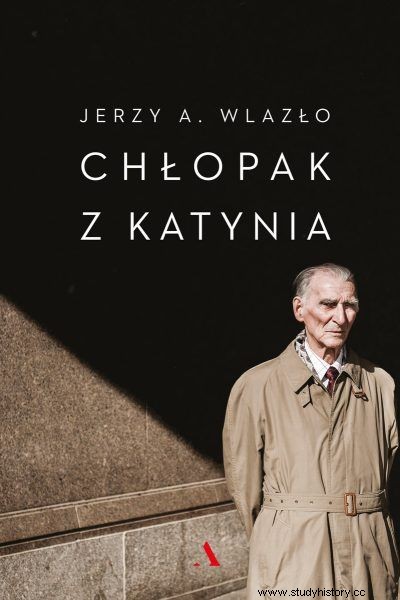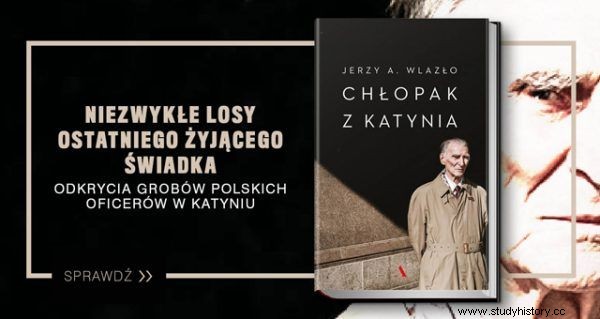When you are 21, you don't think about the future. Man lives carefree and has the impression that the whole world belongs to him. Henryk Troszczyński remembers this moment of his life differently. It was the summer of 1944, Warsaw was preparing for the uprising, and he was worried about the lack of ammunition, rifles and grenades.
The "W" hour arrived, and a group of boys from Wolska 22, in which Henryk was also, had 4 submachine guns and two rifles out of 17 members of the unit.
Nevertheless, when the bells of the church on Karolkowa Street sounded at 5 p.m., they put on white and red armbands and went out into the streets. As they passed another squad of insurgents, they greeted each other, feeling as if they had just liberated the entire city.
Liquidation of the hospital of St. Lazarus
Two days after the beginning of the uprising, on August 3, 1944, only 4 remained of the unit. The rest either ended up in other units or were hiding at home because they stopped believing in victory. Henryk, with his friend, Staśek, went to the barricade to join the rest of the battalion. Along the way, they came under a hail of falling German bombs. This is how Jerzy A. Wlazło describes this moment in his book "Chłopak z Katynia":
They came in threes side by side. One by one they lined up over the target and made circles. The first dived, dropped bombs, and returned to the end of the row, then the second, then the third, and so on until his ammunition was exhausted. The target was a barricade…

Soldiers of the Dirlewanger branch in Warsaw.
But the worst was just coming. On August 5, Henryk carried out a reconnaissance in the vicinity of St. Lazarus. At that time, the German branch of the Dirlewanger Assault Group broke into the facility. Henry, hidden in the nearby bushes, watched the slaughter take place. Everyone in the building is murdered :the sick, the wounded, the staff and residents of Wola who sought refuge there.
There were also wounded German soldiers in the hospital. Only thanks to their intervention, 50 people of the medical staff were saved. They were taken to St. Stanislaus. The Germans had no mercy towards the rest. After leaving the hospital, they poured gasoline over the building and set it on fire. This is what Troszczyński recalled years later when he testified before the Commission for the Investigation of Nazi Crimes:
After this building was set on fire, I saw many sick and injured people jumping out of windows. At that time, I was an eyewitness to German soldiers firing at sick and wounded people popping out of the windows of a burning building. As a result of these shots, they were killing them. I saw dozens of people killed in this way. Mainly injured people were lying in this hospital. In my opinion, only in the one building that the Germans set on fire, there were about 1,000 injured and sick people.

The stimulus for writing the article was the book by Jerzy A. Wlazło "Chłopak z Katynia" (Agora S.A. 2018), which is a story about a man who experienced the drama of World War II by participating in the events that we learn from textbooks today
Death eludes miraculously
The next day, Henryk, along with the civilians with whom he was hiding in the basement at 22 Wolska Street, was captured. All the captured were herded to the wall, where there was already a pile of bodies. The new prisoners had to climb over it to put their hands on the wall. This is how Troszczyński recalls these events in his book "Chłopak z Katynia":
People cried, some prayed, others howled desperately, leaning their arms against the wall and tearing their hair back. Someone tried to chant "Poland has not died yet", someone else "God, something Poland" (…) .
The second series with the amazing whistle of zit, zit, zit, zit, tore the ground under our feet, but then the bullets started hitting people. (...) The man on the right spewed blood from his chest, grunted frighteningly, slumped ... - Daddy! Daddy! ”Someone called from behind.

Civilians murdered in Wola. According to Henryk Troszczyński's recollections, this is how the whole district looked like.
Henryk survived only because the soldiers carrying out the execution were completely drunk and were unable to hit their target. A few precious seconds of delay allowed him to reach the arrival of a gendarme who was looking for prisoners to fill in anti-tank ditches. The insurgent continues:
The gendarmes spread the POWs to the nearest courtyards of Działdowska Street. On each one, as at 26 Wolska Street, there were piles of bodies. They were to fill the ditch with them so that the tanks waiting in the foreground could enter the city. Over the dead.
During the following days, only more bodies were left in the courtyards under the walls. He saw how civilians were ordered to run towards the insurgent fortifications to clear the foreground of mines. All this time, the survivors of Warsaw, captured by German troops, were used to carry and burn corpses. "A there were tens of thousands of them, ”he recalls.
Henryk and other prisoners of war were lined up just before the German positions. The Nazis knew perfectly well that the insurgents would not shoot their own. Behind the live shield they set up a heavy machine gun position. During the first series fired towards the Poles' barricade, the shooter lost control of the rifle, which almost fell out of his hands. Troszczyński saw the man next to him fall to his knees. He was hit in the back.

Construction of fortifications on one of the streets of Wola during the first days of the uprising.
After another unsuccessful series, the shooter set the gun aiming at Henry's back, who knew that only a miracle could save him. The moment of waiting for the shot dragged on forever. When he looked back, he saw the German's head resting motionless on the castle, and blood oozing from the bullet hole in his forehead.
Henryk did not see the end of the uprising. Even during the fighting, he and other survivors were transported by train to Pruszków. From there they went to AL Namslau, a sub-camp of KL Gross-Rossen.
Source:
Trivia is the essence of our website. Short materials about interesting, surprising details from the past, strange news from the old press. Reading that will take you no more than 3 minutes, based on single sources. This particular material is based on:
- Jerzy A. Wlazło, A boy from Katyn , Agora 2018.

